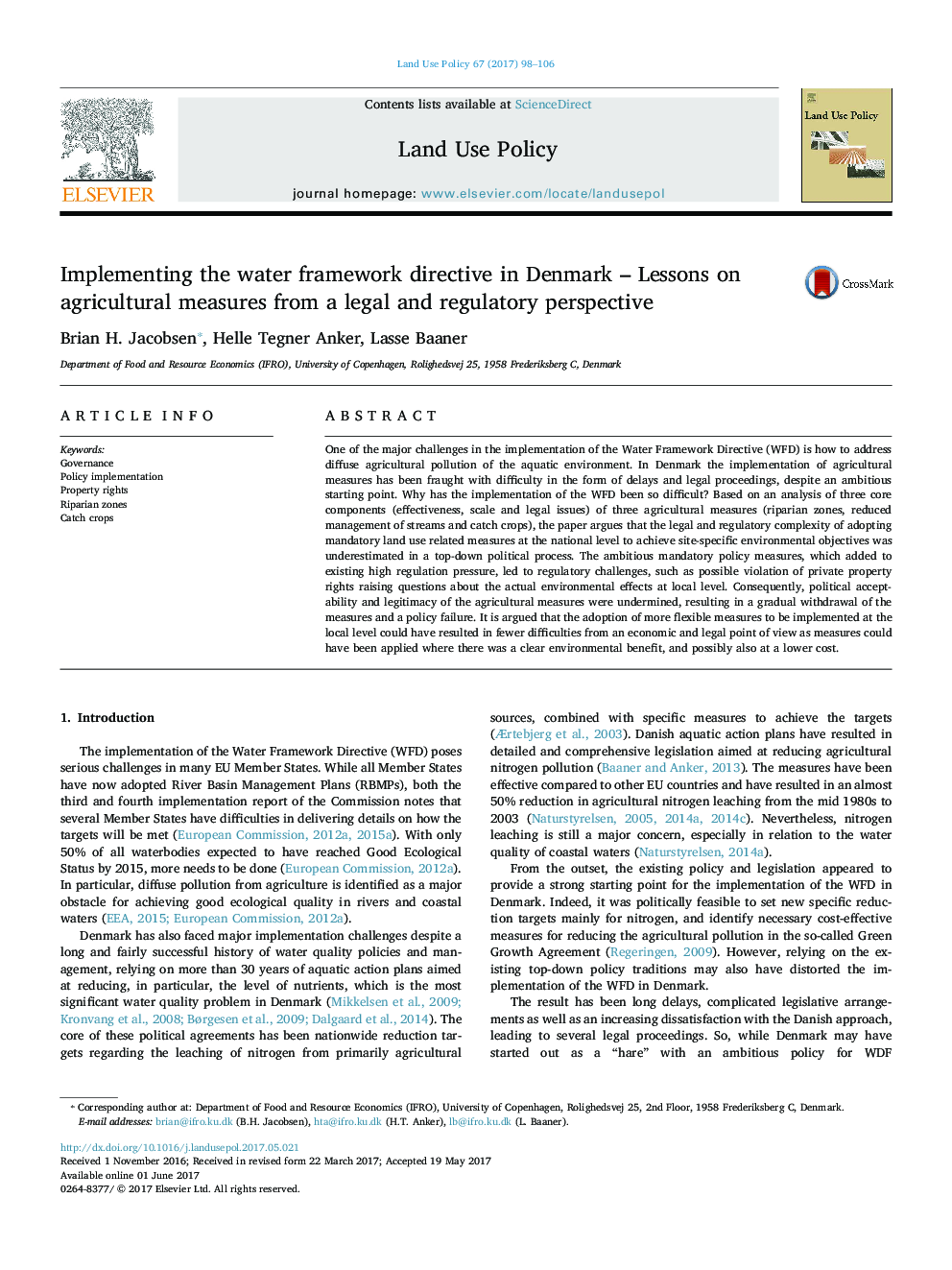| Article ID | Journal | Published Year | Pages | File Type |
|---|---|---|---|---|
| 6460639 | Land Use Policy | 2017 | 9 Pages |
â¢Regulatory complexity was overlooked.â¢Required data was not available.â¢Property rights could be violated.â¢Legitimacy was undermined.â¢Local knowledge on adaption of measures was lacking.
One of the major challenges in the implementation of the Water Framework Directive (WFD) is how to address diffuse agricultural pollution of the aquatic environment. In Denmark the implementation of agricultural measures has been fraught with difficulty in the form of delays and legal proceedings, despite an ambitious starting point. Why has the implementation of the WFD been so difficult? Based on an analysis of three core components (effectiveness, scale and legal issues) of three agricultural measures (riparian zones, reduced management of streams and catch crops), the paper argues that the legal and regulatory complexity of adopting mandatory land use related measures at the national level to achieve site-specific environmental objectives was underestimated in a top-down political process. The ambitious mandatory policy measures, which added to existing high regulation pressure, led to regulatory challenges, such as possible violation of private property rights raising questions about the actual environmental effects at local level. Consequently, political acceptability and legitimacy of the agricultural measures were undermined, resulting in a gradual withdrawal of the measures and a policy failure. It is argued that the adoption of more flexible measures to be implemented at the local level could have resulted in fewer difficulties from an economic and legal point of view as measures could have been applied where there was a clear environmental benefit, and possibly also at a lower cost.
